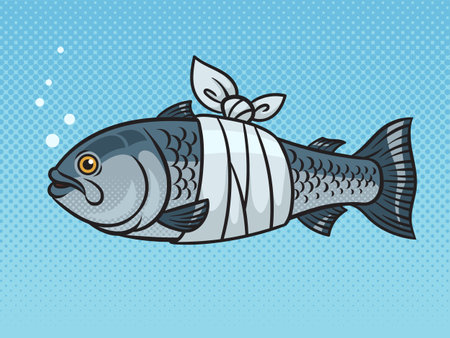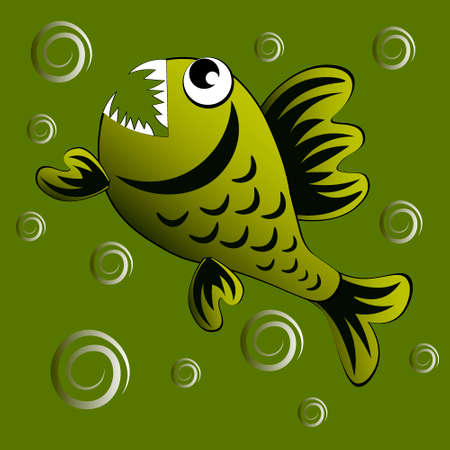Understanding Basic Rod and Reel Types
When you walk into a U.S. tackle shop for the first time, the sea of rods and reels can feel overwhelming. Let’s break it down so you can walk out ready to fish like a local. The main rod and reel combos you’ll see are spinning, baitcasting, and spincasting setups. Each has its own strengths—especially for beginners gearing up for their first day on the water.
Spinning Combos: The All-Around Starter
Spinning rods and reels are the bread-and-butter choice in American fishing circles, especially for newcomers. They’re easy to use, versatile enough for lakes, rivers, or even light saltwater action, and rarely tangle if you stick to the basics. With their open-faced design and fixed spool, spinning reels let you cast lightweight lures with minimal hassle. If you’re just starting out, this is the setup most experienced anglers will recommend—no-nonsense and forgiving if your casting isn’t perfect yet.
Baitcasting Setups: Precision and Power
Baitcasting combos are popular among U.S. bass hunters and serious freshwater anglers who want pinpoint accuracy and control over heavier lures. While they offer more power and better line control than spinning rigs, there’s a steeper learning curve—expect some backlash (the dreaded “bird’s nest”) as you get the feel for thumbing the spool. Not always ideal for rookies, but worth considering if you want to learn advanced techniques down the line or target bigger species right out of the gate.
Spincasting Gear: Simplicity in a Button
Spincasting rods and reels are the simplest combo out there—a closed-face reel with a push-button release makes casting almost foolproof. American kids often start here because it’s easy to handle and nearly impossible to tangle. Spincasting gear is great for panfish or small bass in ponds, but it lacks the versatility of spinning or baitcasting setups as you progress.
The Bottom Line
If you’re just getting your feet wet in American waters, a medium-light spinning combo will handle almost anything your first day throws at you. Baitcasters are best saved for when you want to level up your game, while spincasters are perfect if you want an ultra-simple start—just remember you might outgrow them fast.
2. Matching Gear to Your Local Waters
When you’re gearing up for your first day on the water, picking the right rod and reel is all about knowing where you’ll be casting your line. American fishing spots are as diverse as the country itself—think calm lakes, fast-moving rivers, bustling piers, and wild coastal stretches. Each environment throws its own curveballs, so matching your gear to your local waters isn’t just smart—it’s essential if you want to hook up and not come home empty-handed.
Lakes: Calm but Unpredictable
Lakes are prime territory for beginners. The waters are mostly calm, and species like largemouth bass, panfish, and trout dominate the scene. For most lake fishing, a medium-light spinning rod (6’6”–7’) paired with a 2000–3000 size spinning reel will cover your bases. You get enough backbone for bass but plenty of sensitivity for lighter bites from crappie or bluegill.
Rivers: Go with the Flow
Rivers bring current into play, so you need a bit more muscle in your setup. A medium or medium-heavy spinning rod (7’–7’6”) with a sturdy 3000–4000 size reel is ideal for handling catfish, smallmouth bass, or walleye. Look for rods with fast action tips for better lure control and quick hooksets when fish hit hard in moving water.
Piers: Versatility Is Key
Pier fishing puts you in striking distance of both freshwater and saltwater species, depending on your coast. Here, versatility wins. A medium-heavy spinning or baitcasting combo (7’–8’) matched with a 4000–5000 size reel can handle anything from flounder to stripers. Opt for corrosion-resistant reels if you’re near saltwater to avoid gear-ruining rust.
Coastal Spots: Ready for Big Surprises
The coast is where things get wild—big fish, strong tides, unpredictable weather. You need serious gear: a heavy spinning or surf rod (8’–10’) with a beefy 5000+ size reel will help you battle redfish, snook, or even sharks. Saltwater-rated equipment is non-negotiable here; don’t let a monster fish show you why cheap gear doesn’t cut it.
Quick Reference Table: Rod & Reel Matchups
| Fishing Environment | Recommended Rod | Reel Size | Main Target Species |
|---|---|---|---|
| Lakes | Medium-light Spinning (6’6”–7’) | 2000–3000 | Bass, Panfish, Trout |
| Rivers | Medium/Medium-heavy Spinning (7’–7’6”) | 3000–4000 | Catfish, Smallmouth Bass, Walleye |
| Piers | Medium-heavy Spinning/Baitcasting (7’–8’) | 4000–5000 | Flounder, Striper, Drum |
| Coastal Spots | Heavy Spinning/Surf (8’–10’) | 5000+ | Redfish, Snook, Shark |
Tough Truths from the Field
No matter where you fish in America, don’t try to force one setup to do it all—you’ll end up frustrated and under-gunned at the worst possible time. Know your local water’s personality and pick your rod and reel like you’re building your own luck from the ground up.

3. Key Features to Look For
If you’re stepping onto the dock for your first day with a rod and reel, don’t get lost in the sea of flashy gear. Focus on features that actually make a difference for beginners—because when you’re learning, less is more, but quality still counts. Here’s what to zero in on:
Rod Length
For your rookie run, go with a rod that’s around 6 to 7 feet long. This sweet spot gives you enough casting distance without making things awkward or unmanageable. Shorter rods are easier to handle from the bank or a small boat, while longer rods are best left for surf fishing or when you need serious reach.
Action
The action of a rod—meaning where it flexes when loaded—is crucial. For first-timers, a medium action rod is the goldilocks zone: it’s forgiving if your timing is off and gives you enough backbone to set hooks cleanly. Fast action rods (bend near the tip) are great for pros chasing specific species, but stick to medium for all-around ease and versatility.
Gear Ratio
This spec gets overlooked, but it matters. Gear ratio tells you how many times the spool turns per handle crank on your reel. A 5:1 or 6:1 ratio keeps things simple for beginners: fast enough to bring in line quickly without being hard to control. Lower ratios mean more power but slower retrieval—overkill unless you’re hauling lunkers from heavy cover.
Other Must-Have Features
- Comfortable Grip: EVA foam or cork handles are easy on the hands for all-day casting.
- Smooth Drag System: You want a drag that doesn’t jerk or stick—a smooth drag helps prevent snapped lines and lost fish.
- Line Capacity: Make sure your reel can hold enough line for where you’re fishing—100-150 yards of 8-12 lb test is plenty for most freshwater situations.
Bottom Line
Don’t sweat every technical detail; just lock in these basics and you’ll have gear that’s effective, user-friendly, and ready for whatever your first day throws at you.
4. Setting a Practical Budget
Getting into fishing doesn’t mean you have to break the bank, but it pays to be smart about your investment. For first-timers, setting a realistic budget ensures you get quality gear that won’t let you down on your debut trip. In the U.S., outdoor retailers like Bass Pro Shops, Cabela’s, Academy Sports, and even Walmart offer solid entry-level rod and reel combos that balance cost and performance.
Understanding Entry-Level Pricing
A good-quality beginner combo typically runs between $40 to $100. Below this range, you risk flimsy rods or unreliable reels; go much higher, and you’re paying for features you won’t need yet. Here’s a quick breakdown of what to expect at different price points:
| Price Range | What You Get | Recommended For |
|---|---|---|
| $40–$60 | Basic spinning/casting combos, durable enough for freshwater action, often pre-spooled with line. | Total beginners, budget-focused buyers. |
| $60–$80 | Improved materials (graphite rods, smoother reels), better casting feel, more brand options. | Anglers wanting reliability without overspending. |
| $80–$100 | Entry-level gear from premium brands—better components and warranties. | Those who want extra durability or plan to fish regularly. |
Maximizing Value at American Outdoor Retailers
If you want serious bang for your buck, shop sales around Memorial Day, July 4th, and Labor Day—big-box stores run deep discounts on starter kits. Don’t overlook store-brand combos; they’re often manufactured by reputable companies under private labels but cost less. Check return policies and in-store demos so you can handle the gear before buying. Also, ask staff for recommendations—they fish local waters and know what works in your area. Stick to the essentials: rod and reel combo, basic tackle box, pliers, and a spool of extra line. Save the fancy gadgets for later once you’ve got some experience under your belt.
5. Checklist Before You Head Out
Before you hit the water for your first fishing trip, make sure you’re dialed in with the right gear and setup. Here’s a no-nonsense prep list to keep things simple and stress-free.
Rod and Reel Assembly
- Attach the reel: Secure your reel firmly to the rod seat. Double-check there’s no wiggle—tight is right.
- Check rod guides: Run your fingers down the guides to make sure they’re straight, smooth, and free of nicks that could fray your line.
Tackle Selection
- Packs some basics: Bring a small tackle box with assorted hooks (sizes 2-6 cover most beginner situations), split shot weights, bobbers, and a couple of lures or soft plastics that match local species.
- Don’t forget pliers: Needle-nose pliers help with hook removal and cutting line on the fly—don’t leave home without them.
Basic Line Setup
- Spool up: Fill your reel with fresh monofilament (8-12 lb test is solid for starters) or braid if you’re feeling adventurous. Make sure it’s not overfilled or underfilled—aim for about 1/8 inch below the spool lip.
- Tie on a leader: For clear water or sharp-toothed fish, add an 18-inch fluorocarbon leader using a simple uni-to-uni knot.
Final Touches
- Test your drag so it’s snug but not locked down tight—you want to give a little when a fish runs.
- Give everything one last once-over: Are your knots tight? Is the reel handle spinning smooth? You’re ready to roll.
Your First Day, Set for Success
This checklist keeps things tight and focused. Master these basics, and you’ll spend more time catching and less time fussing with gear. Now get out there and make your first cast count!
6. Pro Tips for Getting Comfortable Fast
Alright, rookie anglers, here’s where you separate the tire-kickers from the real deal. The right rod and reel are just your ticket to the show—how you use them makes all the difference. First off, don’t overthink it: start with a simple spinning combo. These setups are forgiving and versatile, perfect for learning the ropes without getting tangled in technical headaches. Keep your gear light and manageable so you can focus on building muscle memory instead of wrestling your equipment.
Master the Basics Before Going Big
Resist the urge to chuck heavy lures or cast for distance like a pro on YouTube. Focus on accuracy and control—practice short casts in your backyard or at a quiet spot on the water. Nail down smooth casting motion and gentle retrieves; these small wins build confidence fast.
Avoid Rookie Mistakes
Don’t skip checking your drag setting before you cast—it should be snug but not locked tight. Always double-check that your line is threaded correctly through every guide on your rod (you’d be surprised how often this gets missed). When spooling your reel, make sure the line lays evenly to avoid ugly tangles later.
Keep It Simple, Stay Organized
Stick with just a few basic lure types—think soft plastics or spinners—and keep them handy in a small tackle box. Label compartments if you need to; nothing kills momentum like digging around for gear when fish are biting. A pair of needle-nose pliers and some spare hooks are must-haves in your kit.
Learn From Other Anglers
If you see seasoned locals working the docks or shorelines, don’t be shy—ask questions! Most American anglers love sharing tips, especially with newcomers who show genuine interest. Watch their technique, pick up on local slang, and soak in all you can. There’s no substitute for real-world advice from folks who know those waters best.
Enjoy the Ride
The first day is about learning and having fun—not about hauling in trophy catches. Laugh off mistakes, take plenty of photos, and celebrate each milestone (even if it’s just an epic cast that lands five feet from shore). With these pro tips in your back pocket, you’ll gain confidence fast and get hooked on fishing the American way.


